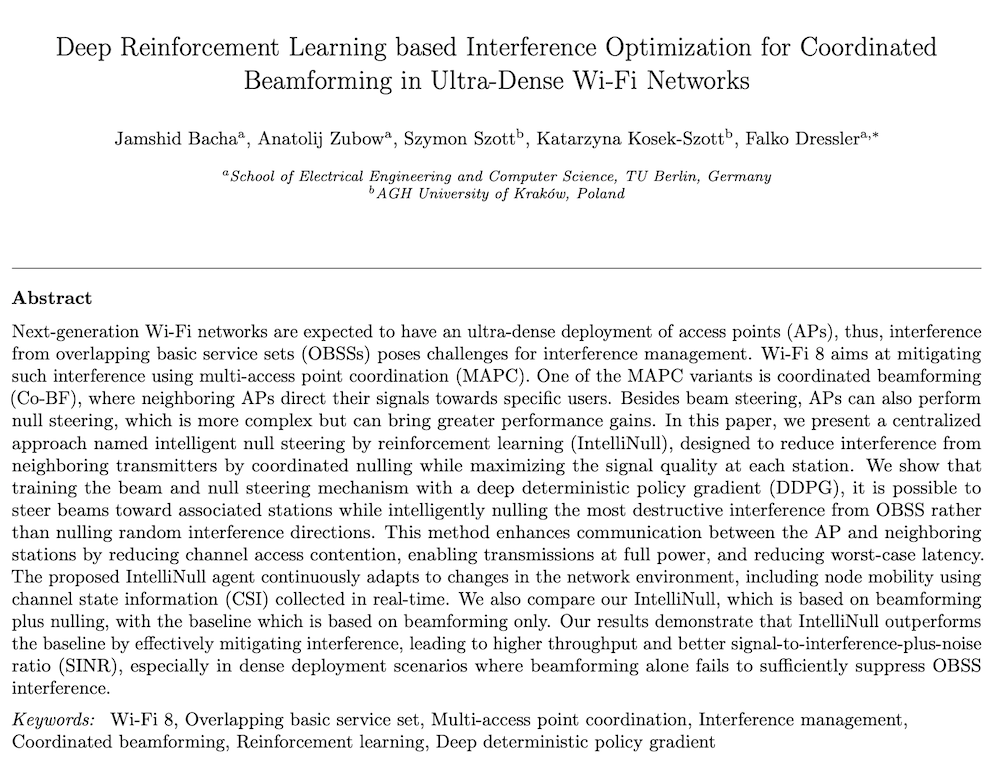Literature Database Entry
higuchi2018how
Takamasa Higuchi, Falko Dressler and Onur Altintas, "How to Keep a Vehicular Micro Cloud Intact," Proceedings of 87th IEEE Vehicular Technology Conference (VTC 2018-Spring), Porto, Portugal, June 2018.
Abstract
The emerging concept of vehicle cloudification is a promising solution to deal with ever-growing computational and communication demands of connected vehicles. A key idea is to have connected vehicles in the vicinity form a cluster, called vehicular micro cloud, and collaborate with other cluster members over vehicle-to-vehicle (V2V) networks to offer data processing, data storage, sensing and communication services. It allows us to use vehicles as virtual edge servers that complement traditional cloud and physical edge servers in the backbone network. In this paper, we design a mechanism to intelligently schedule where and when to form such vehicular micro clouds. A remote server maintains statistics of the amount of available on- board computational resources spatio-temporally, and analyzes these statistics to identify the locations where vehicles can consistently offer a sufficient amount of resources for service provisioning. The results from our proof-of-concept simulations show that our system can significantly reduce the risk of resource scarcity in vehicular micro clouds.
Quick access
Original Version ![]() (at publishers web site)
(at publishers web site)
Authors' Version ![]() (PDF on this web site)
(PDF on this web site)
BibTeX ![]()
Contact
Takamasa Higuchi
Falko Dressler
Onur Altintas
BibTeX reference
@inproceedings{higuchi2018how,
author = {Higuchi, Takamasa and Dressler, Falko and Altintas, Onur},
doi = {10.1109/VTCSpring.2018.8417759},
title = {{How to Keep a Vehicular Micro Cloud Intact}},
publisher = {IEEE},
address = {Porto, Portugal},
booktitle = {87th IEEE Vehicular Technology Conference (VTC 2018-Spring)},
month = {6},
year = {2018},
}
Copyright notice
Links to final or draft versions of papers are presented here to ensure timely dissemination of scholarly and technical work. Copyright and all rights therein are retained by authors or by other copyright holders. All persons copying this information are expected to adhere to the terms and constraints invoked by each author's copyright. In most cases, these works may not be reposted or distributed for commercial purposes without the explicit permission of the copyright holder.
The following applies to all papers listed above that have IEEE copyrights: Personal use of this material is permitted. However, permission to reprint/republish this material for advertising or promotional purposes or for creating new collective works for resale or redistribution to servers or lists, or to reuse any copyrighted component of this work in other works must be obtained from the IEEE.
The following applies to all papers listed above that are in submission to IEEE conference/workshop proceedings or journals: This work has been submitted to the IEEE for possible publication. Copyright may be transferred without notice, after which this version may no longer be accessible.
The following applies to all papers listed above that have ACM copyrights: ACM COPYRIGHT NOTICE. Permission to make digital or hard copies of part or all of this work for personal or classroom use is granted without fee provided that copies are not made or distributed for profit or commercial advantage and that copies bear this notice and the full citation on the first page. Copyrights for components of this work owned by others than ACM must be honored. Abstracting with credit is permitted. To copy otherwise, to republish, to post on servers, or to redistribute to lists, requires prior specific permission and/or a fee. Request permissions from Publications Dept., ACM, Inc., fax +1 (212) 869-0481, or permissions@acm.org.
The following applies to all SpringerLink papers listed above that have Springer Science+Business Media copyrights: The original publication is available at www.springerlink.com.
This page was automatically generated using BibDB and bib2web.







